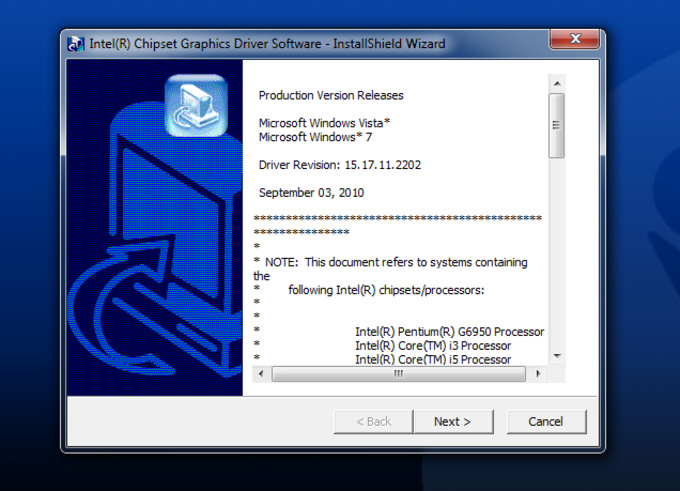Drivers Usbdtt Sound Cards & Media Devices

Drivers Usbdtt Sound Cards & Media Devices Software


Download sound card drivers or install DriverPack Solution software for driver scan and update. Download Download DriverPack Online. Sound card drivers.
-->Windows provides global slider controls for altering DirectSound performance on a system-wide basis. The sliders control the level of hardware acceleration and quality of sample-rate conversion (SRC) that are made available to DirectSound applications. Changes made to the hardware-acceleration and SRC sliders are persistent across boot-ups.
- In Control Panel, double-click the Sounds and Audio Devices icon (or just run mmsys.cpl). On the Audio tab, select a device from the Sound Playback list. Select the Advanced button. Select the Performance tab. At this point, you should see two sliders that are labeled Hardware acceleration and Sample rate conversion quality.
- The ATI cards are the easiest to use. Simply install the card and the drivers and the audio works. The Nvidia cards require that an internal SDPIF connection be made between your PC's sound card or motherboard and the Nvidia video card. Making the Connection. Not all video cards which support PC audio over HDMI ship with HDMI outputs.
- Unified driver and control panel: Windows Vista 32-bit Windows Vista 64-bit Windows 7 32-bit Windows 7 64-bit: 1.14: 939 KB: 2012-07-30: Juli@-x2v-v114.zip: unified driver and control panel: Windows Vista 32-bit Windows Vista 64-bit Windows 7 32-bit Windows 7 64-bit: 1.11: 938 KB: 2012-03-12: Juli@-x2v-v111.zip: unified driver and control.
The hardware-acceleration and SRC settings can be changed only by direct end-user action. No API is available for changing the hardware-acceleration or SRC setting from an application program. This behavior improves stability and prevents software from placing the audio system in a state from which it cannot be removed without rebooting.
These settings affect only DirectSound applications. Note that the waveOut API always uses the best SRC quality regardless of the setting of the DirectSound SRC slider. Also, in all current versions of Windows, waveOut applications are unable to use hardware-accelerated pins on audio devices and are unaffected by the setting of the DirectSound hardware-acceleration slider. For more information about the Windows multimedia waveOut API, see the Microsoft Windows SDK documentation.
To locate the DirectSound hardware-acceleration and SRC sliders in Windows, for example, follow these steps:
In Control Panel, double-click the Sounds and Audio Devices icon (or just run mmsys.cpl).
On the Audio tab, select a device from the Sound Playback list.
Select the Advanced button.
Select the Performance tab.
Microsoft battery driver download for windows. At this point, you should see two sliders that are labeled Hardware acceleration and Sample rate conversion quality.

The hardware-acceleration slider has four settings that range from None (level 0) on the left to Full (level three) on the right. The following table shows the meaning of these settings.
| Acceleration Level | Setting Name | Description |
|---|---|---|
0 | Emulation | Forces emulation. |
1 | Basic | Disables hardware acceleration of DirectSound secondary buffers. |
2 | Standard | Enables hardware acceleration of DirectSound secondary buffers but disables vendor-specific property-set extensions. |
3 | Full | Enables hardware acceleration of DirectSound secondary buffers and enables vendor-specific property-set extensions. |
Emulation Setting
The Emulation setting above forces DirectSound into emulation mode. In this mode, DirectSound applications run as though no DirectSound driver is present. All mixing is done by DirectSound in user mode, and the resulting audio data is played back through the waveOut API. The result is typically a large increase in latency.
Basic Setting
The Basic setting disables hardware acceleration of DirectSound secondary buffers. Under this setting, all DirectSound applications run as though no hardware acceleration is available, regardless of the capabilities of the sound card that is being used. You can use this setting during testing to emulate a sound card that has no DirectSound acceleration. With an adapter such as the OPL, which has no acceleration of DirectSound secondary buffers, this setting has the same effect as the Standard setting. In Windows Server 2003, Basic is the default setting.
Standard Setting
The Standard setting enables hardware acceleration of DirectSound secondary buffers but disables vendor-specific extensions such as EAX (Creative Technologies' environmental audio extensions) that are exposed as property sets through the IKsPropertySet interface (see Exposing Custom Audio Property Sets). In Windows 2000, the Standard setting is selected by default.

Full Setting
The Full setting enables full acceleration of DirectSound secondary buffers. This setting also enables property sets for vendor-specific extensions that are exposed through the IKsPropertySet interface (see Exposing Custom Audio Property Sets). IKsPropertySet extensions include vendor-specific hardware enhancements such as EAX.
If the user adjusts either the hardware-acceleration or SRC setting to a value other than the default, DirectSound uses the new setting instead of the default.
Drivers Usbdtt Sound Cards & Media Devices Free
With this program, you can solve all the problems related to the sound card, video card, screen, graphics, or connection errors using different features that repair, update, restore, and uninstall all the drivers needed for each element.
The biggest advantage of using DriveTheLife is that you don't need to investigate each possible solution. Once you start scanning, it will give you a list of all the problems that need to be fixed and the best alternatives for each one. You can start the download with one click, and, once it's finished, all these problems could well be resolved.
This program can fix errors on any device you have installed, so you don't need specialized external tools for each driver; with DriveTheLife, you can get through the maintenance process in a more convenient and simple way – that is to say, in just two clicks.
